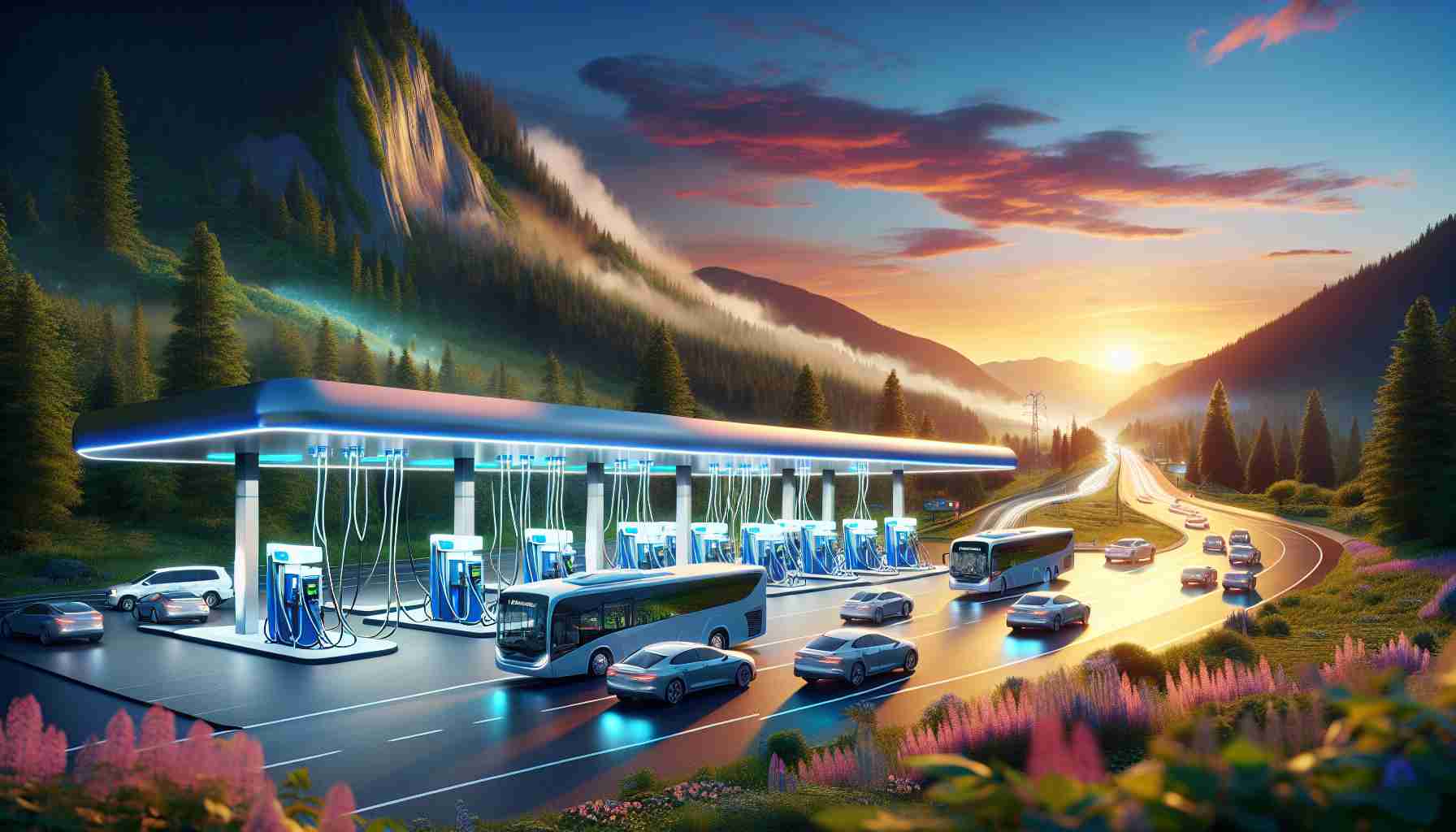In a move to promote greener transportation options in British Columbia (BC), the H2 Gateway project is set to expand hydrogen fuel infrastructure beyond battery-electric vehicles. The initiative, supported by both provincial and federal governments, will introduce up to 20 hydrogen refueling stations across BC and Alberta.
These stations will not only enable fuel-cell vehicles to refill their tanks but will also cater to heavy-duty vehicles. Fourteen of the stations will be capable of refueling as many as 300 heavy-duty vehicles daily, paving the way for a more sustainable transportation ecosystem.
To complement the fuelling stations, new hydrogen electrolyzer facilities are planned for Burnaby, Nanaimo, and Prince George. Additionally, a hydrogen production facility is in the works at 100 Forester Street in the District of North Vancouver. This facility will utilize vented by-product hydrogen from ERCO Worldwide’s sodium chlorate plant, liquefying 15 tonnes per day.
Colin Armstrong, president and CEO of HTEC, emphasizes the significance of partnerships and agreements for the success of the fuelling network. He applauds the collaboration between HTEC and the Province of BC, recognizing its pivotal role in driving ambitious and transformative projects like H2 Gateway.
The entire project comes with a price tag of $900 million, with $133 million in support from BC’s Low Carbon Fuel Standard and a $337 million low-cost loan from the Canadian Infrastructure Bank. This financial backing is instrumental in bringing the vision of clean fuels and sustainable transportation to reality.
BC Minister of Energy, Mines and Low Carbon Innovation, Josie Osborne, highlights the environmental benefits of utilizing hydrogen as a clean fuel alternative to diesel. Not only does it help reduce harmful pollution, but it also fosters job creation and opens up opportunities in the clean economy.
With hydrogen fuel-cell vehicles offering the advantages of long-distance travel and short refueling times, the H2 Gateway project sets the stage for a more eco-friendly transportation landscape in British Columbia. This initiative marks a significant step forward in the province’s commitment to reducing emissions and embracing sustainable solutions.
FAQ Section:
1. What is the H2 Gateway project?
The H2 Gateway project is an initiative in British Columbia (BC) that aims to expand hydrogen fuel infrastructure. It plans to introduce up to 20 hydrogen refueling stations across BC and Alberta to support both fuel-cell vehicles and heavy-duty vehicles.
2. What are the benefits of the H2 Gateway project?
The H2 Gateway project will contribute to a more sustainable transportation ecosystem. It will allow fuel-cell vehicles to refill their tanks and provide refueling options for heavy-duty vehicles. The project promotes greener transportation options and helps reduce harmful pollution.
3. Where will the hydrogen refueling stations be located?
The hydrogen refueling stations will be located across British Columbia and Alberta. The exact locations have not been specified in the article.
4. What other facilities are planned to support the project?
In addition to the refueling stations, new hydrogen electrolyzer facilities are planned for Burnaby, Nanaimo, and Prince George. A hydrogen production facility is also being developed at 100 Forester Street in the District of North Vancouver.
5. How is the H2 Gateway project funded?
The entire project has a price tag of $900 million. It receives $133 million in support from BC’s Low Carbon Fuel Standard and a $337 million low-cost loan from the Canadian Infrastructure Bank.
6. What is the role of partnerships in the success of the project?
Partnerships and agreements are crucial for the success of the H2 Gateway project. Collaboration between HTEC, the company leading the initiative, and the Province of BC plays a pivotal role in driving ambitious and transformative projects like H2 Gateway.
Definitions:
1. Hydrogen fuel infrastructure: The infrastructure required to produce, distribute, and refuel hydrogen as an alternative fuel source for vehicles.
2. Fuel-cell vehicles: Vehicles that use fuel cells to generate electricity, typically by combining hydrogen and oxygen, to power an electric motor.
3. Heavy-duty vehicles: Vehicles like trucks, buses, and other commercial vehicles that are larger and more powerful than regular passenger vehicles.
4. Hydrogen electrolyzer: A device that splits water into hydrogen and oxygen using electricity, with the aim of producing hydrogen gas for various applications.
5. Low Carbon Fuel Standard: A policy or regulation that sets specific requirements for reducing greenhouse gas emissions from transportation fuels and promoting the use of low-carbon alternatives.
Suggested related links:
1. BC Hydro: BC Hydro is British Columbia’s main electric utility company and provides information on clean energy, including initiatives related to hydrogen fuel and transportation.
2. Natural Resources Canada: Natural Resources Canada is a government agency focused on promoting sustainable energy solutions. They provide information on clean transportation and hydrogen fuel initiatives in Canada.
3. Canadian Infrastructure Bank: The Canadian Infrastructure Bank is a federal crown corporation that supports infrastructure projects across Canada. Their website provides information on their role in financing sustainable infrastructure projects.
Please note that these suggested links represent the main domains and not specific subpages.
